Ready the white coat. Don the goggles. Drink heaps. Baccarat’s UK launch – last month, at the Connaught Bar – of its new glassware collection, Chateau Baccarat, required of its guests a special sort of predisposition: one that appreciates the science behind design while getting utterly bladdered. Fortunately, we came prepared.
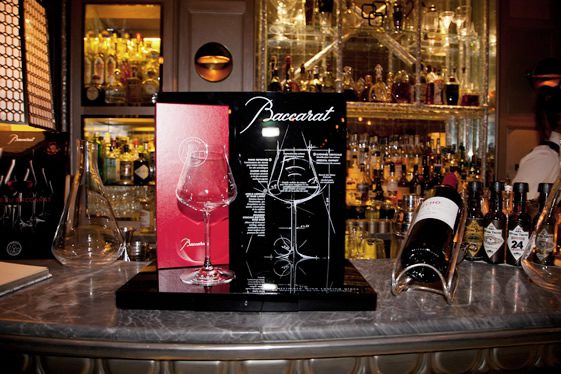
The Connaught Bar is beautiful. A recent David Collins revamp, it borrows heavily from the post opiate glamour of the 1920s, only this time on a scale not much larger than a postage stamp. All leather and marble and gold leaf, its have-a-laugh lacquered martini trolley matched by a propensity for mixing some of the best cocktails in London, the Connaught Bar is exactly where you might hope to test Baccarat’s claim to have produced a glass that actually enhances the taste of wine.
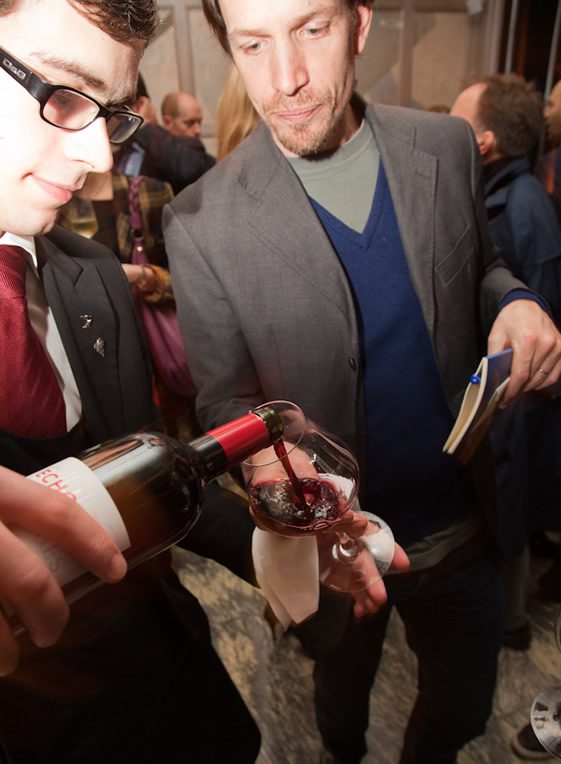
Which, of course, is nothing new. The claim, we mean. Making glasses with rims, diameters and depths best suited to this or that wine is a market created, cornered and extensively trawled by Claus Riedel. Convinced during the 1950s of the idea that our taste buds are divided on our tongue according to the 4 basic tastes (sweetness at the tip, sourness towards the back and saltiness and bitterness down the sides), and knowing that tasting is also smelling, Riedel’s big contribution to the art of wine drinking is to have developed a line of glasses designed to direct the liquid to a certain part of the mouth, while allowing enough time for it to aerate, the aromas to settle, balance out, the liquid to oxidise.
Riedel’s why you drink out of a bowl rather than a funnel; why the red wine glass is bigger than the white; why there is a growing market for glasses designed for specific varietals, regions etc.
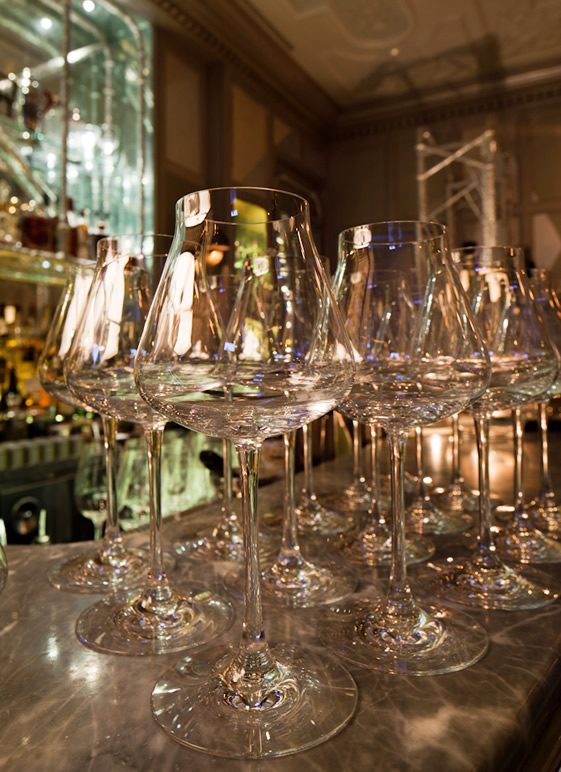
Unfortunately, while Riedel has done many good things for the style in which we get hammered, the idea that different parts of the tongue are responsible for different tastes is a wrong ‘un. The truth is our taste buds (which today include protein sensitive Umamii and fattiness) are spread higgledy piggledy across the tongue. The receptor molecules and taste cells that make up the buds constitute the full gamut of tastes – all in an area so small as to deem all rim chat (in a wine glass-making sense) pointless.
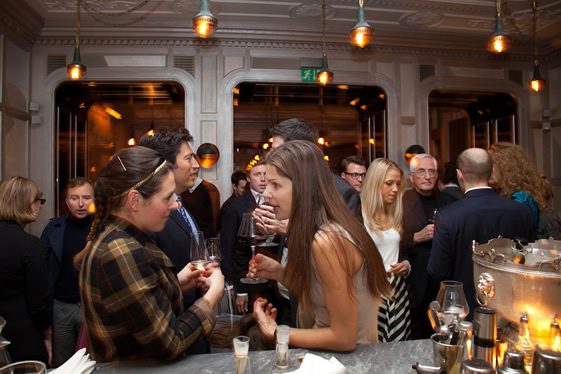
Which is not to say Riedel was all wrong. He wasn’t: smell plus taste still equals flavour; the wine bowl topped with aroma catching tapered rim rules. The question now – posed at the Connaught Bar – is where to from here? Chateau Baccarat knows: one glass for white; one glass for red – only larger; a champagne flute; a carafe; and 2 tumblers – large and small. That’s it, the collection, no messing.
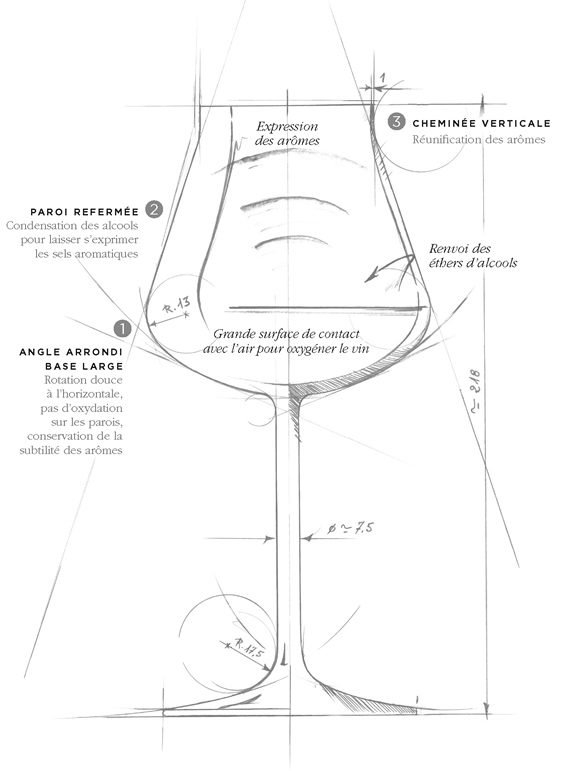
To look at, the wineglass begins with a wide stand base, slips up through a long stem, spreads very quickly – very widely – at the bottom of the bowl, before angling in to finish in a ‘vertical chimney.’ Less egg-like than the competition, less fragile, it’s a piece of maths made glass, and as such beautifully different. To drink from, it’s difficult to say how good it is (the opposition wasn’t invited), but we have to confess to frequently recharging our glasses in the name of the nose, the mouth and the brain – all comfortably numb come kick out time.
Event photography © Luke Hayes








